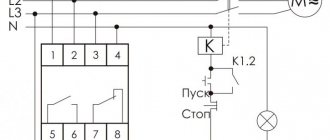What it is, scope of application
A wireless call is a device consisting of a group of elements:
- SPEAKER A sound comes from it when the contacts close.
- BUTTON. This is a mechanical element that ensures the product operates.
- TRANSMITTER. With the help of this element, a signal is transmitted from the button (located outside) to the speaker (mounted indoors and emits sound).
Wireless calls are used in the following cases:
- For a private home (for example, when the gate is located at a distance from a residential building).
- For a dacha where the entrance to the site is distant from the building on the site.
- On the door to the apartment. The option with a wireless call is convenient for ease of installation, the ability to avoid drilling holes and laying wires.
- In warehouses and offices. Giving a sound signal allows employees to be informed of the client’s arrival.
The scope of application is very wide. The wireless bell can be used wherever notification of the arrival of a guest or visitor may be useful.
What is a wireless doorbell
Wireless Doorbell
A wireless doorbell consists of several important components that perform their role. These include:
- Speaker. It produces a sound when guests press the bell.
- Button. A mechanism that needs to be pressed in order for the contacts to close and sound to appear.
- Transmitter. Transmits a signal via radio from a button to a speaker.
The main areas of application of a wireless doorbell:
- Private houses. They are often installed on a gate that is located at a distance from the house.
- Dachas, where the entrance is also remote from the building.
- Apartments.
- Warehouses, offices.
A wireless call becomes an excellent replacement for a wired analogue. It can be used in any place where it is necessary to notify the owner of the arrival of visitors.
Advantages and disadvantages
Before purchasing a wireless call, it is important to study its features, evaluate the pros and cons, and then decide on the possibility of use.
Advantages:
- No wires. During the installation process, you can do without a drill (except for the case of attaching the button using self-tapping screws), pulling wires or cables connecting the button and the speaker. This is convenient when the product is purchased for a summer house or private home. When installed on an apartment door, you can avoid tearing off wallpaper or damaging the interior. The device is self-powered, so there is no need for a separate voltage supply (except in some cases).
- Easy and fast installation. Fixing the product takes a few minutes. This is due to the absence of wires and complex fastenings.
- Convenience. The use of such a product does not cause difficulties, both for guests and for owners of the house (cottage, apartment).
- Easy to move to another place. Due to the absence of wires, the wireless call can be reset at any time.
- Possibility of use in combination with complex devices. Wireless calls can be used for intercom or equipped with two buttons (if necessary).
- Nice design. Modern models have an attractive appearance, so they fit into any interior. A large selection of models allows you to choose a product that matches the shape, color or material of manufacture. You can be sure that a wireless call will only decorate your interior or exterior.
- Independent nutrition. Regular bells operate without batteries and require wires to supply voltage. In the case of a wireless device, this is not necessary. The voltage is supplied from batteries, so even if the lights are turned off, guests will be able to notify of their arrival. This feature is useful for private homes or for summer cottages where there is no electricity. An alternative option is to use a wireless call without batteries, when power is supplied from special batteries (purchased separately).
- Possibility of additional equipment. If desired, wireless calls can be supplemented with other devices (depending on the model). We are talking about connecting a video camera, TV or other equipment.
Flaws:
- Installing a wireless button is not possible in all cases. No wires are used during the installation process, and the signal is transmitted wirelessly. If there are obstacles in its path, the product will not work. Under such circumstances, you will have to install a classic wired bell or eliminate the cause of the interference (if possible).
- The need to change the battery. The autonomous power supply tends to discharge, so from time to time it requires replacement. If you skip this point, the wireless call will not work.
- Poor fastening. Some models are fixed with a sticky base. This option is suitable for a door to an apartment. When installed in a country house or used for a private home, the button is fixed on the street. When exposed to cold, it often disappears. In addition, the Velcro fastener does not withstand even light physical impact.
- Possibility of jamming. The presence of negative influences (for example, moisture entering the product, the influence of low temperatures, or displacement of the contact group) leads to the button getting stuck in the actuated position. As a result, the call works until the battery runs out or the defect is eliminated.
- Ease of theft. The wireless bell model is easier to steal because there are no wires connected to it. To prevent theft, you can install a video camera at the entrance. It will be doubly useful. Firstly, it allows you to look at the guest personally, and secondly, it will reduce the likelihood of theft.
- No signal transmission. Problems with the circuitry may result in difficulty sending the signal from the button to the bell. Another situation is possible when the command arrives, but there is no sound.
A wireless call is not a perfect device, but its advantages more than cover the disadvantages of its operation.
Operating principle, diagram
In the case of a wired call, the situation is clear. After attaching the button on the outside and the bell on the inside, they are connected using a wire. Power is supplied to the speaker, and the circuit is closed through a button.
In a wireless call situation, the same principle is used, but there is no need to complete the electrical circuit.
The operating principle is simple:
- The guest presses a button installed near the apartment, on the gate near a private house (dacha) or in another place.
- The transmitter is activated, sending the signal wirelessly to the receiver (call).
- The electrical circuit is activated.
- Power is supplied to the speakers and the music (that is programmed into the device) plays.
Models with a combined operating principle are available for sale. For example, the button is powered by a battery, and the sound source is connected to a standard power supply.
The speed of signal transmission and its strength depend on a number of factors - the distance between devices and the presence of obstacles (for example, walls or doors). It is important to remember that brick, concrete or metal structures significantly degrade the signal.
The design of wireless calls is simple, which guarantees their reliability, ease of operation and long service life.
There are two boards installed in the button and the device with the bell. A third circuit (signal generator) is also provided, characterized by the absence of failures.
Wired call equipped with an electronic sound generator
The source of sound in such devices is a speaker, which has successfully replaced the traditional electromagnet with a bowl. Most modern models work exactly according to this scheme. In order for the speaker to begin emitting programmed melodies, vibrations of various frequencies are applied to it. Moreover, in this case, you will have the opportunity to independently choose the sound of the doorbell. This could be a quiet hum or an interpretation of popular music.
The button of such a device does not supply power to the bell, but only activates the circuit. For those who are interested in how much a call costs, we will answer that prices for wired models range from 300 to 1000 rubles. It all depends on the availability of additional functions.
Device types
There are two types of wireless calls:
- With separate power supply. The button runs on a battery, and the bell runs on mains power.
- With shared meals. In this case, both nodes operate from a DC source (battery).
Modern models are divided into:
- By functional purpose. Products can be intended for a home or cottage (street and waterproof version), for an apartment door or for an intercom.
- According to the configuration. Buyers have several configuration options at their disposal in terms of the number of buttons and speakers - 1+1, 2+1, 1+2 or 2+2, respectively. When choosing an option, it is important to focus on the number of entrances and the area of the house.
- According to the functional “filling”. Modern models can be supplemented with Wi-Fi, a microphone, a video camera, and work without batteries. Some wireless calls have the option to set your own ringtone (using a flash drive). For better sound quality, a number of devices are equipped with two speakers (as noted in the package). This is convenient when the product is installed in a room with a large area. The device can be used with Smart Home systems (the website has a separate section on this topic).
Thanks to this classification, there are no difficulties in choosing the appropriate button. The main thing is to select a model taking into account the current situation and needs.
Types of wireless doorbells
There are many different models of wireless doorbells available today. They vary in price, configuration, functionality and type of power supply, reliability and scope of application.
Models of such gadgets are presented in various configurations. They may have multiple buttons associated with a single receiver. This is useful if there are several entrances to a room or area.
Wireless call with two buttons
But there are options with several receivers operating from one button. Such receivers also have many advantages. For example, they are installed in places where a bell located near the door usually cannot be heard (kitchen, bathroom, garage, etc.).
Wireless call with two receivers
If the distance between the button and the speaker is greater than the operating range of the device, then it can be supplemented with a repeater, which will significantly increase the operating range. The principle of its operation is that it simultaneously performs the functions of a receiver and transmitter. The repeater, configured for both devices, receives the signal from the transmitter and transmits it to the receiver.
Based on the type of power source, the following main types of devices are distinguished:
- The transmitter and receiver are powered by batteries or rechargeable batteries.
- The transmitter is battery powered and the receiver is mains powered.
- The transmitter operates by pressing (without batteries), and the receiver operates from the mains or batteries (battery).
The first type is the most common, as it is simple and does not require a network connection. To operate the receiver and transmitter, you only need to insert AA or AAA batteries, depending on the model.
The second type is less common, but more economical, since the speaker connected to the network consumes little electricity and does not require constant changing of batteries to operate. There are two options here: the receiver is inserted into a socket or wires are connected to it.
But the third type is very promising. Its essence lies in the fact that the transmitter starts working by pressing a button. That is, when pressed, enough energy is generated to send a signal to the receiver. This type is very popular among owners of private houses, since in the cold winter the batteries are quickly discharged, and the batteries lose their capacity much faster.
Wireless doorbell models also differ in functionality. The main difference is the number of melodies played. In budget options there are, as a rule, no more than ten. Expensive models have better-quality speakers, and a much larger set of melodies. In addition, some models provide the ability to download your own melodies or sounds via electronic media or a wireless connection. More expensive configurations of such devices also provide vibration alert functions or a bell indicator light. This is very convenient if someone is relaxing in the house, but it is necessary to know that guests have arrived.
More advanced models can be equipped with a surveillance camera, video intercom and motion sensor. The sensor is triggered when movement begins at a distance of several meters from the door, it turns on the camera and records what is happening. Thus, such devices can become part of a smart home or security system if everything is configured correctly.
Wireless call with camera and motion sensor
Depending on the purpose, there are two main types of wireless calls: outdoor and indoor. The first, as a rule, is chosen by owners of private houses, and the second by apartment owners. Since outdoor means installing the transmitter outdoors, it must have qualities such as resistance to ultraviolet rays, moisture resistance and impact resistance.
For more durable operation, most models are equipped with a small visor, which is installed above the button and protects the device from precipitation or direct sunlight. In addition, the body of such a button must be sealed to protect the filling from dust or moisture. If protection from vandals is needed, then, as a rule, they install a receiver in a metal case; the button itself is also made of metal.
Metal anti-vandal wireless call button
Therefore, before deciding which call is better, you need to decide on the location of its installation and the necessary functionality.
Technical characteristics - main differences
Despite their apparent simplicity, wireless calls differ in technical characteristics. Basic parameters that are important to pay attention to when choosing include:
- Device operating frequency and range.
- Type of signal being transmitted.
- Number of speakers and buttons included.
- Power and type of electrical power (mains or batteries).
- Backlight (provided or not provided).
- Possibility of installing different melodies or setting your own music (using a flash drive).
- Volume control option.
- Supports application function for intercom or video peephole.
- Option to send SMS messages.
- Night light function and motion sensor.
- Operating temperature range (important when installing the button outdoors).
- Availability of moisture protection (provided for outdoor options).
- Other characteristics.
As a rule, modern wireless calling models operate at frequencies from 433 to 434 MHz. The exception is products operating at a lower frequency - 315 MHz.
When assessing the range, it is important to evaluate not only the information from the passport, but also the presence of interference. Their presence reduces the range of action. For example, a concrete wall or an armored door prevents the signal from entering. Drywall or wood transmits electromagnetic waves better.
Additional components
In order to make your stay in the house as comfortable as possible, you can additionally equip the doorbell with various types of auxiliary devices. They can be included in a set of more expensive and technically advanced models or sold separately. In this case, it is necessary to clarify the compatibility of devices with each other.
Such additional components primarily include the following devices:
- Camera . In other words, a video peephole. It can work continuously or be activated when a person approaches the door. There are also models that are fully interconnected with the call and are activated when you press the call button. The image is displayed on the monitor included in the kit, or can be sent to a tablet, computer, smartphone, etc.
- Motion Sensor . This feature allows you to receive notifications about visitors even before pressing the button. Also, if there is a video eye, it activates the camera and starts recording.
- Intercom . This is a one-piece system consisting of a call button that sends a signal to the apartment and a receiver. There are also speakers and a built-in microphone, which allows home owners and visitors to communicate with each other. Can be equipped with a camera.
The wireless call can be additionally equipped with a camera and a motion sensor
It is also worth paying attention to a number of additional features that some wireless calls have. They can be equipped with a backlight, a volume control key or a complete mute signal, a melody selection function and setting different signals for each individual button if there are several outputs. Some models can send home owners a signal about the arrival of guests via SMS. Each additional feature increases the final cost of the product.
Additional components to expand functionality
To increase comfort and convenience, you can complement the wireless call with additional devices. Sometimes they are included with more expensive models.
An alternative option is to purchase the product separately and then connect it to the “base”. In the latter situation, it is important to clarify the possibility of unification.
Additional elements include:
- VIDEO-EYE. It operates on a permanent basis or is activated using a motion sensor (when a person approaches the door). There are cameras connected to the bell button and only activated when it is pressed. The image received from the video eye is transmitted to a special monitor. The signal can be output to a phone, PC or laptop.
- MOTION SENSOR. The presence of such a node allows you to inform the owner about the arrival of a guest before he presses the button. In addition, the triggering of the sensor gives a command for the video eye to operate or starts recording (depending on the setting).
- INTERCOM. Some models of wireless calls are available for intercom. Such a system is more complex and involves the presence of speakers, a microphone, a camera and a monitor that allow you to see and communicate with the visitor.
Advanced models can be equipped with backlighting, a volume control knob, or a mute button.
Some devices can send a signal about a guest's arrival via SMS. It is important to note that the price of the selected model depends on the number of additional functions.
How the device works
The principle of operation of a conventional doorbell is based on the fact that a wire is drawn from a button located outside, which is connected to a speaker located inside the home, as well as to the electrical network to power the device. As soon as the guest presses the button, the signal is transmitted through the wire and the bell sounds.
Wireless calls operate on a similar principle with only one difference - the signal is not transmitted via a cable, but by receiving radio waves from a button. This is much more convenient, as it allows you to get rid of a bunch of wires, and besides, such devices are powered by a battery or a simple battery, which does not require a network near the bell location. Some models have a combined power supply principle: a battery is inserted into the button, and the speaker is connected to the network in the usual way. A signal is sent when the button is pressed. The speaker is equipped with a receiver that reacts to the sent waves and reproduces sound, notifying the owners of the house that they have been visited.
It is worth considering that the range of the device may be reduced depending on the type of materials used in the construction of the house. Concrete and brick walls, as well as metal doors, partially jam the signal.
Working principle of wired and wireless doorbell
In modern doorbell models, you can not only choose a very pleasant melody from the basic assortment, but also download any other one using a flash card and a computer, or transfer it via a mobile phone.
Some wireless calls may have two or more speakers. In this case, you can place the receivers in those corners of the house where the call is often difficult to hear, for example, in the workshop or kitchen. There are also models that include several buttons. This is an excellent option for those who have a private house with several entrances from different sides of the site.
Video eye for wireless calling
With the help of an additional camera, the owner of an apartment, house or cottage can see a visitor from a distance. As a result, it is easier for him to make a decision about opening the doors.
If there is a peephole with a camera on the apartment door or gate, the calling visitor is reflected on the monitor inside the building. The image from the camera can be transferred to a separate display, PC or laptop (depending on the selected model). The quality of image transmission depends on the camera installed in the video eye.
When choosing a circuit, it is important to consider that the peephole needs additional and more reliable power. The following paths are available here:
- Search for a suitable low-power kit (if continuous video recording is required).
- Scheme with video eye activation only when a button is pressed. Under such circumstances, the camera only records the face of the person calling.
- The video eye is powered separately. In such cases, the use of a wireless call is not entirely clear, but such a scheme is common.
- A circuit with a motion sensor that detects whether a guest is near the bell button. This option is convenient for controlling inappropriate citizens who may make fun of the owner. The convenience is that the video camera records when there is movement near the entrance (pressing the button is not necessary).
When choosing a video eye, it is important to pay attention to the camera resolution. The higher this parameter, the better the image.
On the other hand, with a higher resolution, the volume of video received increases greatly. In addition, high-resolution video eyes have high power requirements.
How to install a doorbell?
This is much easier to do than it might seem at first glance. Conventional wired models have two power outputs. It is to them that two wires need to be brought out in order to connect the button and the wires from the distribution panel.
At the initial stage, it is necessary to determine the location in which the device itself will be located. To limit the route of the wire for the button, it is recommended to install the bell on top or to the side of the front door. To install wired models, you will need electrical tape, wire cutters, pliers, a thin and indicator screwdriver. To bring the bell two-core insulated wire outside, you need to drill a hole in the door frame. The wire located outside must be connected to the terminals of the bell button. As for the button itself, it should be securely mounted on the wall.
If the battery is located in the device body, then the second end of the wire must be connected to two terminals located on the battery. If it is located separately, then the bell wire is pulled from the bell to the button. In this case, each pre-cut end of the cable is connected to a terminal.
When connecting a bell to a transformer, first of all you need to connect it to the junction box, after which you can perform the above manipulations. In this case, you need to carefully ensure that the bell terminals are connected to the transformer terminals that provide the appropriate voltage. At the final stage, it is necessary to secure the wires to the terminals located in the bell body. Before doing this, you should carefully study the manufacturer's instructions. Typically, manufacturers describe the connection algorithm in detail and as accessible as possible.
What is the difference between indoor and outdoor wireless calls?
When buying a wireless bell for your home, it is important to consider its future location. There are two basic options here - indoors (for an apartment) or outdoors (for a home or cottage).
In the first case, it is enough to buy a simple model, without moisture protection and a wide temperature range. If you plan to install a wireless call outdoors, the approach to selection is more serious.
The main requirement is the presence of a moisture-proof coating to prevent moisture from entering the internal elements of the device.
In addition, a wireless bell for outdoor installation must withstand temperature changes and operate in a wide temperature range. This requirement applies not only to the shell, but also to the internal circuits of the product. Moisture protection should also be provided here.
When installing on doors, it is worth providing a small canopy to protect the product from moisture, sun rays, dust, wind and other negative influences.
The main requirement is that the additional element does not interfere with the passage of the signal.
To avoid theft or protect your wireless call from vandals, it is recommended to choose models made of durable metal. The downside is that they will be more expensive.
Features of choice
When purchasing a wireless call, it is important to know the selection rules and follow them when selecting a device. It is important to pay attention to the following details:
- TYPE. The operating principle of wireless calls is almost the same. The differences relate only to design, functionality and equipment.
- APPEARANCE. When choosing, it is important to focus on the design of the house, apartment or cottage, so that the installed equipment fits into the interior. It is important to take into account color, design, shape and other features. Against the backdrop of competition, each manufacturer tries to distinguish its models and make them better than those of competitors.
- NUMBER OF BATTERIES. Depending on the complexity and design of the device, the number and type of power supplies used may vary. This point must be taken into account, because in the future the batteries will have to be changed.
- RADIUS OF ACTION. When purchasing a wireless call for an apartment, this factor does not matter. It’s a different matter when installation is planned in a private house or country house, and the distance between the gate and the house is up to ten meters or more. When studying range, it is important to consider interference in the signal path. range, without obstacles such as walls or doors. That's why it's better to focus on a larger range of action (take it with a reserve).
- CASING. When installing externally, you should pay attention to the material and build quality of the housing. Key factors are resistance to moisture and dust, as well as vandalism. As noted, metal models with high-quality moisture protection are more suitable for outdoor installation.
- MELODY. Most simple models have one or two melodies that you will want to change over time. That's why it's better to get wireless calls with music replacement options. Some devices allow you to insert a flash drive or transfer music from a smartphone.
- SIGNAL POWER. When installing a wireless call button at a distance of 50 meters or more, it is recommended to take equipment with an amplified signal. In addition, before making a purchase, it is worth testing the product at the distance of interest.
- EQUIPMENT. An equally important selection criterion is the composition of the kit. The extended version can add a video eye, an additional button or speakers, a motion sensor or other devices. When purchasing elements separately, it is important to clarify the possibility of their combined use.
- ATTACHMENT METHOD. This is a key point that receives little attention. As a rule, fixation is achieved using simple Velcro. Under the influence of cold or other negative natural factors, it stops holding the button and comes unstuck. The best solution is to secure the wireless call button using self-tapping screws, but such an option must be provided for this.
- PRICE. The seller’s task is to earn as much as possible from the client, so when choosing, you should not follow the seller’s advice 100%. It is important to focus on personal needs and take equipment based on your goals. You shouldn’t overpay for additional features that will never be useful, or for a brand.
- GUARANTEE PERIOD. When choosing a simple model, the likelihood of breakdown is minimal (this is due to the absence of complex elements). It's another matter when the package includes many additional devices. Under such circumstances, you should give preference to products with a warranty of 10 years or more.
Using the above recommendations will allow you to choose a high-quality wireless call with the necessary functionality and at an affordable price.
Popular models
The choice of wireless call models is wide enough to choose the appropriate option.
For an apartment, private house or cottage
Popular models for cottages, private houses or apartments include:
- "Cosmos", KOC_AG512С. The package includes a calling unit and a unit with a speaker. The button is secured using glue screws or double-sided tape. Additional features are noise immunity, 32 melodies, and a range of 150 meters.
- Elektrostandard. The model includes a receiver, button, battery and instructions. The average service life is at least three years when working up to 5 times a day. There are several modes (with light and sound). Features: volume control, light indication, range of 80 m, two batteries.
- "Kosmos Premium", KOC_689. A more modern model with 25 polyphonic melodies, volume control (three positions) and IP protection level. Range of 100 m.
For a summer house with a waterproof button
In this series, the best wireless calls include:
- Rexant "RX-6". The kit includes a power supply, call button and speaker. The latter is powered by 220 V, which must be taken into account when choosing. Features: 36 melodies, waterproof button, range of 80 m. The button is powered by a 23 A battery.
- Proline 2T-298 is a wireless call with a waterproof touch button, night light options and a range of 100 m. The user is offered 48 melodies to choose from. The call key is powered by a 12-volt battery, and the speaker is powered by a 220 V network. The operating volume is from 50 to 80 dB. Signal transmission power - up to 10 mW, frequency - 433 MHz. The kit includes a call button, speaker and battery.
For an apartment with Wi-Fi
One of the most popular models is Cleverdog. This is a standalone wireless Wi-Fi call that provides up to 90 days of operation. After installing it, you can view information from your mobile phone and enlarge the image (up to three times). Camera viewing angle is 85 percent.
Cleverdog Wireless Call Features:
- Receiving messages from visitors. If the owner does not answer within 15 seconds, the system goes into voice notification mode.
- Possibility of visual contact with the visitor.
- Long validity period - up to three months.
- Outputting video to the screen.
- No wires and easy to install. To get started, you need to install the application, connect the device and secure it with screws.
- Degree of protection IP 65.
- Operating temperature from -10 to +60 degrees Celsius.
With two buttons
If there are two inputs (for example, in a country house or in a private house), you can use wireless calls with two buttons. Popular models:
- Proline 2B-289. It has 48 melodies and a range of up to 100 meters. Operating frequency - 433 MHz. The kit includes a pair of buttons and one speaker. The button is powered by a battery, and the sound source is from a 220 V network. The sound volume ranges from 50 to 80 dB. The device can be used in a store, office space, country house or other places. During operation, it is recommended to use alkaline batteries, which have a long service life. It is prohibited to disassemble or repair the equipment yourself.
- QUSUN D035K2 DC. This is a popular wireless call with two buttons and 36 ringtones to choose from. The radius of application is up to 150 meters. The button is powered by a 23-amp power supply, and the speaker is powered by simple AA batteries. Operating frequency - 315 MHz. The scope of application is different - installation in the country, in a store, in an office and other points. The kit includes two call buttons, a speaker and a 23 A battery (two pieces).
- Also supplies wireless calls with two buttons.
Wireless call with two speakers
Buying a wireless doorbell with two speakers is useful for large rooms. In addition, an additional sound source can be installed in the backyard or second floor. Popular models:
- Proline B-288-2 is a wireless call with one call button and two speakers. The button is protected from water. There are 48 melodies to choose from. The working distance is up to 100 meters. The call key is powered by a 23-amp power supply. Features - presence of a night light function, power supply to the speaker from 220 V, presence of an LED indicator on the sound source. Volume - from 65 to 75 dB (four levels of adjustment).
- Proline A-298-2 is a wireless call equipped with two speakers and one waterproof call button. The user is offered 48 polyphonic melodies to choose from. The call key is powered by a 23-amp source, and the speaker is powered by 22 volts. Working distance - up to 100 meters. A night light function is provided. Volume from 50 to 80 dB.
No batteries
Some devices operate without batteries. Popular models with an alternative type of power supply include:
- Wireless call Proline HT-W4U02. The product is powered by a constant voltage of 5 V. Operating frequency is 433 Hz. The operating range is up to 80 m. The user is offered up to 389 melodies with the ability to set one of three volume levels. The special feature of Proline HT-W4U02 is the conversion of kinetic energy. The moment the button is pressed, mechanical pressure is converted into energy. Next, a special module sends the signal to a distance of up to 80 m before the call. The latter is connected to 5V power via a USB port. Immediately after this, the selected melody sounds.
- Proline HT-W4U01 is an equally popular wireless call that works on the same principle. Its range is limited to 80 meters, and the number of melodies is 38 (three volume levels). Operating frequency - 433 MHz.
The absence of a power source on the button eliminates the need for batteries and saves money on their purchase. Moreover, wireless devices without batteries are more reliable. They are unpretentious to different weather conditions and are not afraid of contact oxidation.
Doorbell operation diagram
To understand the operating principle, consider examples of the simplest devices of standard designs.
DC action
The sound of a doorbell is created using a small knocker made in the form of a metal ball. It is located at the end of a narrow bending plate. When mechanical vibrations occur, it strikes the bell. The element is firmly connected to a moving anchor, which moves relative to the reference point.
This part also contains:
- an adjusting spring device that affects the speed at which the pendulum returns to its initial position, which is activated by breaking the electrical circuit;
- moving part of the magnetic circuit;
- contact that transmits voltage to the electromagnet coils.
Two electric coils with windings connected in series are located around a magnetic core. When current hits them, a field is created, the strength of which increases with each turn and is several times greater than the value that appears in one wire.
The strength of a magnet can reach greater levels and, accordingly, perform significant mechanical work. In a doorbell it is needed to turn the armature. It is attracted to the stationary part, then the hammer strikes the mini-bell.
When connecting a doorbell, the power source can be a rectifier powered from an alternating electricity network, or a galvanic cell - a battery, an accumulator.
After opening the contact group, the electric charges stop moving, the voltage disappears, and the magnetic field fades. Only the spring continues to act on the anchor. And if the button remains pressed, the load will again arise, and the hammer will begin to strike.
In practice, it looks like this: a sound signal is heard until the visitor releases the button.
AC operation circuit
In this case, the energy obeys the law of sinusoidal harmony, according to which magnetic and electric fields continuously interact and are directed towards each other.
A current varying in direction and magnitude passes through the coil, forming a flux of a certain shape in the magnetic circuit. The resulting force forces the anchor to make return movements in both directions. First, the bell is struck, the second vibration takes the hammer to the starting point. After which everything repeats itself. The generated ringing corresponds to the frequency of the current change.
Modern models of wired doorbells operating from a 220 V network use step-down transformers that automatically adjust the voltage downward. The primary winding of the converter is supplied with 220 V from the home electrical network, and the button receives a reduced load.
A similar design using alternating current transformers is also found in stationary telephone equipment and industrial alarm systems.
Installation features
Installing a wireless call is not difficult, so you don’t need to call a paid technician to solve the problem. Problems are only possible when connecting additional elements, for example, a camera, motion sensor and others. In other cases, problems are excluded.
When choosing an option, it is important to take into account that it is easier to attach Velcro, but then the key may fall or be stolen. It is better to install using self-tapping screws. When installing outdoors, it is important to ensure there is a canopy to protect from water and sun.
There are also no problems with installing the product inside the house. If you have a large room, second floor or workshop, it is worth installing an additional sound source. In this case, you can exclude the possibility that the call was not heard.
The installation takes place in several stages:
- Study of the configuration. At this step it is necessary to inspect the composition of the product. Advanced models may have additional devices, for example, video cameras, motion sensors and others. It is important that all items are in the box (taking into account the existing list).
- Selecting a location for installation. When searching for an installation point, one of three options is available. A common way is to mount it on the door (directly into a metal or wooden panel). Alternatively, you can install a wireless key near the entrance (near the trim). This will require the use of screws. For private houses or cottages, installation near the gate is suitable. When searching for a location, it is important to ensure protection from moisture and dust.
- Installation. After selecting a suitable mounting point, you can proceed directly to installation. When fastening near the door, we make holes using a hammer drill, having previously marked the place of fixation. To avoid mistakes, the drill diameter must be selected in advance. Next, install the button using self-tapping screws. If there was a wired product in the same place, it must be removed after first removing the voltage from the connected wires. If the old holes are not suitable for installing a new product, they should be covered with putty.
- Installation of blocks indoors. Internal elements do not have to be mounted on the wall. An alternative option is to install the product on a bedside table near the door or near the place of use. To mount it to the wall you will need the hammer drill mentioned above. If the bell needs power, we supply it taking into account the recommendations in the instructions.
At the final stage, it remains to check the functionality of the device. After pressing the key, music should sound (provided that it is installed correctly). From this moment you can use the device.
Step-by-step instructions for installing a wireless call
Step one. After purchase, the equipment is inspected and it is made sure that all parts are present. Including additional devices in the form of a motion sensor or camera.
Step two. The components are unpacked and a place for installing the modules is selected. If the receiving station is powered from a household network, then a circuit is drawn up to connect it to it.
The bell button is usually mounted on the door frame or on the wall next to the door. If this is not possible, then you can attach it directly to the door leaf.
You need to remove the old button. If a used device was powered by an electrical network, it must be de-energized before dismantling.
Step three. Let's move on to the actual installation of the button. It must first be inspected to determine the mounting option. There are models where this part is glued with Velcro. It must be said that this method is extremely bad and it is better to immediately remake the body for fastening with self-tapping screws.
When installation occurs on a wooden surface, you simply need to secure the housing with screws. But if the installation needs to be carried out on a concrete wall, then it needs to be prepared. Places for holes are marked, which are then drilled with a hammer drill. Wooden or plastic plugs are driven into the wells and the bell button body is attached to them using self-tapping screws.
Step four. We install the internal modules of the receiving device. You don't always have to hang them on the wall. If the unit is powered by a battery, then it can be installed on any surface where it will not interfere with the passage and where it can be clearly heard.
This could be a bedside table or a closet in the hallway. Or a comfortable place in the room. If you decide to mount the module on the wall, you will have to use the hammer drill again. When the indoor unit operates from a household electrical outlet, you should be careful about connecting it to it.
Step five. A battery is inserted into the body of the bell button. After which an attempt is made to give a signal. If the internal module plays a melody, then the entire installation was completed correctly and you can use the device.











